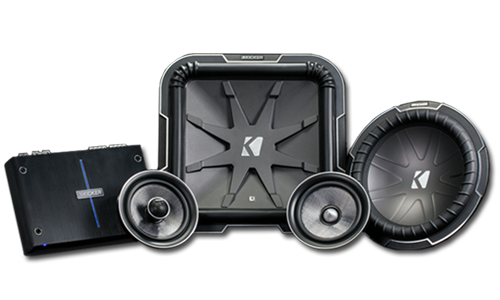When shopping for the best speakers for your car, there are a few important points to consider. The first is whether to go with component or full-range (coaxial) speakers. This depends on your budget and concern for sound quality. Component speakers sound better and cost more. Second, look at the specs and features that are unique to each sound system. Here are the most important details to consider.
Component vs. Coaxial
Component speakers provide better sound but are more expensive. Full-range or coaxial speakers are cheaper and easier to install since you can typically find aftermarket replacements that are direct replacements for the OEM units.
If sound quality is the most important factor for you, get component speakers. If your budget doesn’t allow it, many full-range speaker systems provide great sound. Full-range speakers are also the better option if you’re planning on a DIY installation and don’t have much experience.
New Car Speaker Size and Configuration
Before you shop for new speakers, find out what kind of speakers you will be replacing. One option is to remove your existing speakers and measure them. If that doesn’t work, many shops that sell speakers can look up the size and configuration of your vehicle’s factory-installed speakers.
If your car or truck came from the factory with full-range speakers, and you plan to replace those speakers with new full-range speakers, then it’s especially important to know the size and configuration. In most cases, you’ll be able to buy new speakers that you can drop into the existing speaker receptacles.
Car Speaker Power Handling
The speakers need to handle the power load of the head unit or external amplifier. Power handling is the amount of energy (measured in watts) that the speakers can deliver without distorting. The most common measurement is the root-mean-square (RMS) value.
When looking at speakers, pay closer attention to the RMS power rating than to the peak power handling rating. While the latter refers to how much continuous power a speaker system can handle, the peak value refers to the maximum power a speaker can deliver in short bursts.
If you’re also shopping for a new head unit, you have more room to make sure your power levels don’t exceed what your alternator can deliver.
Car Speaker Sensitivity
Sensitivity refers to how much power the speakers require to put out a given volume level. Speakers with higher sensitivities require less power. If you have an anemic factory stereo, get speakers with a high sensitivity level. On the other hand, speakers that have low sensitivity tend to work fine with high-powered external amps.
To determine the right sensitivity level for your system, find out how much power is drawn by the head unit and external amplifier.
Car Speaker Build Quality
Many OEM speakers are made with relatively low-quality materials that degrade over time. Upgrading only the speakers can provide superior sound quality, even if you leave everything else alone. Your investment will last longer if you look for speakers that are made with high-quality materials.
Here are some tips to keep in mind when it comes to build quality:
- Rubber surrounds are more durable and tend to last longer than foam or cloth.
- Stiff, lightweight woofer materials like polypropylene mixed with mica or metal-coated synthetic fabrics last a long time and provide a great bass response.
- Tweeter materials like polypropylene, silk, ceramic, and metal are often aesthetic considerations.





Leave a Reply
You must be logged in to post a comment.